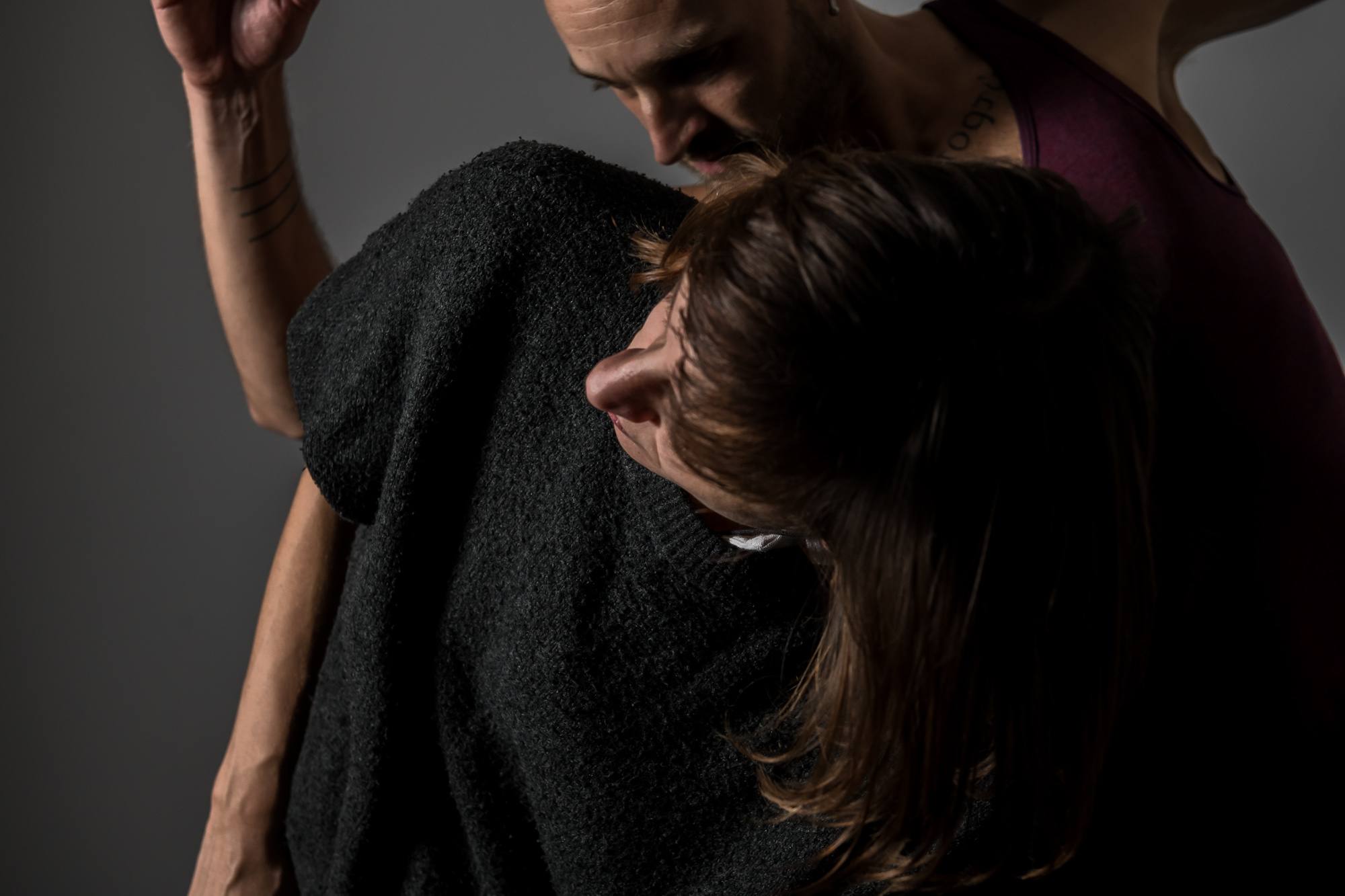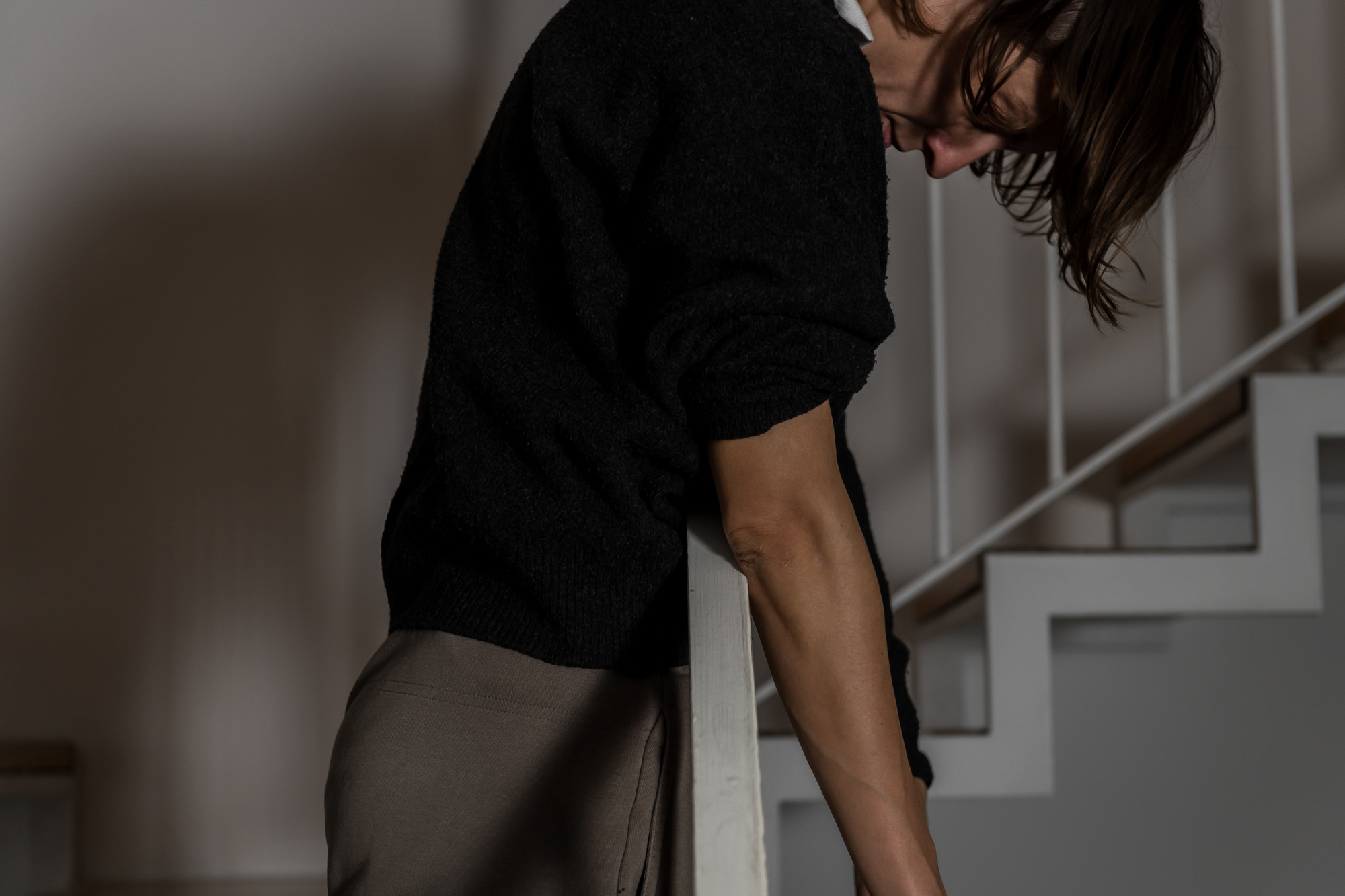Rome, 25 November 2023. artQ13, an independent space dedicated to artistic research and experimentation, presented the performance Parallel Perspectives. Seen/Unseen. A multifaceted and kaleidoscopic artistic operation conceived by Britta Lenk, curated by Angelica Gatto, with dancers Luca della Corte and Valentina Sansone and photographers Sebastiano Luciano and Giorgio Benni.

Della Corte and Sansone are the practical centre of the event. Their gestures, their movements, their pauses, are the alpha and omega of the action. They tell of two bodies and their relationship, in space, time and beyond them. Always elegant in their movements and almost never synchronised, their essential dance that sways between the lightness of the outcome and the drama of the thesis, projects us into the human vortex, between the eros and thanatos of existence. Equal and opposite force, estrangement that reinforces the total structure, are their out-of-human, automatic, puppet-like characteristics. Being everything and their opposite makes them absolute narrative expedients, immaterial elements that acquire body only when their movements approach the disordered audience, concrete par excellence.
The soundtrack, conceived by Carlo Carolo, electronic and extra-naturalistic, traces the dance (or one could say vice versa). It is punctual in its asynchronicity, it remains at the bottom of the action characterising it, also thanks to the influx of AI, the sound of the artificial word, the cyborg translation of reality.

The two dancers relate, then, with the space, a balanced and astonishing interior, specular in the longitudinal coordinates of the gaze and haughty in the latitudinal ones, with its two floors, the staircase that opens at the bottom, the horseshoe-shaped gallery, the glass table that turns into a porthole towards the top. A rationalist candour that melts into the postmodern cul de sac, which becomes an absolutely unsurprising scenography. Other space that welcomes the action by disappearing into its sense.
But above all, della Corte and Sansone relate to the photographers and the perceptive essence of the image. Sebastiano Luciano and Giorgio Benni, technical and technological eyes, with their photographic prostheses always censoring their faces, are part of the action, in their elliptical movements at the edges of the dance, creating another, silent and austere dance. Luciano’s camera, surgical on the dancers, is connected to a computer that transmits the data of the photographs in real time, projected immediately on the white wall. Benni, on the other hand, widens the field, photographing the entire action and delivering his shots to the audience at the end of the performance.

The gaze, of the audience and the photographers, is, after all, the essential centre of the event. The double focus (the dancers on one side and the projected photographs on the other) that at times becomes triple (with the dancers moving away from each other) leads the gaze to move between the different points in an abrupt manner, a set of anatomical mechanics, from those of the eye to those of the neck, collaborate in the direct capture of the event, continuously and without pause.
But the theoretical focus of the performance can only be on the contemporary characteristics of the reproduced image. If we look at the actual action of the dancers and at the same time at their photographic translation projected on the wall, we certainly realise that we are seeing two extremely different things. The technological mirror transforms the aura of the dancers into crystallised frames, transforms the actual reality into something very different, changes its existential parameters. And so the bouncing of our eyes between the different fires of the action – a bit like in the last scene of that treatise on the perception of photography that is Michelangelo Antonioni’s Blow Up, when the protagonist, Thomas, watches a tennis match made by two mimes, without rackets and without a ball – is a metaphor for an imperceptible passage of state, it is the entering and leaving of one dimension to another, in that analogue-digital universe in which we exist but which still creates, of course, disturbance for us.

The beauty of the dancers’ movements, real, is only an echo in the photographs, which instead in their two-dimensional fiction privilege composition, the body-context relationship. But as Angelica Gatto writes: “in the relationship between reality and fiction, live action and technical reproducibility, an over-dimension is established in which what dominates is the perception, fictitious or not, of what takes place before the eyes of the public. This collective body […] is activated in the silent exchange that disrupts any sensory certainty’. Where by ‘collective body’ he means the hic et nunc of the relational exchange between all the actors involved in the performance. “A collective body that short-circuits its own perceptive faculties, hyper-stressed and uncertain of where its gaze will turn”.
The performance shows us with a certain gentleness a not indifferent complexity of reality and the human, always poised on the threshold of the real-virtual, relying on the cryptic essentiality of the gaze (of the audience, of the photographers, of the technical instrument). The anxiety of perception of, as Georg Simmel wrote a century ago, ‘that being without boundaries who lives by boundaries’.
images (cover – 1) Parallel Perspectives – Seen Unseen, Luca Della Corte e Valentina Sansone (2) Parallel Perspectives – Seen Unseen, locandina (3) Parallel Perspectives – Seen Unseen, Luca Della Corte e Valentina Sansone (4) Parallel Perspectives – Seen Unseen, Luca Della Corte e Valentina Sansone (5) Parallel Perspectives – Seen Unseen, Valentina Sansone









































